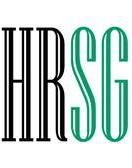
Author: Anne Fulton
Here at Fuel50 we spend a lot of time talking about talent. How to identify it, how to develop it, and most recently, how to leverage it. Clearly, talent leverage is in integral part of HR efficiency, as it allows you to build employee bench strength, reduce recruitment costs and save on expensive consulting or outsourcing fees.The problem is that you can't leverage talent if you don't know it's there.
A lively example of the powerful benefits of effective talent leverage is the Babylon episode of Mad Men television series. Set in the 1960's, the show sets us at a safe distance to comment on the disconnect that occurs when rigid power structures and the fixed job descriptions that often accompany them obscure your view of the talent you have on hand.
When the new employee Peggy Olsen arrives at the agency as a secretary, she does not cause too much of a stir. She is not among the most physically attractive of the office ladies, in a world in which looks appear to be the primary criteria for career progression. However, Peggy has hidden talents.
Peggy's talents emerge when mid-level copywriter Fred is stuck on a lipstick campaign. He is ready to give up the account when he and fellow execs decide to 'throw it to the chickens', meaning the secretarial pool.
Rising to the powerful executives’ challenge that she doesn't want to be “one of many colors in a box”, Peggy, a secretary, gets assigned the copy for this campaign, which of course becomes a hit. She goes on to become creative director at the agency, saving director Don on numerous occasions and is responsible for the agency’s long-term success. Just think if her hidden talents had not been revealed!
In order to move towards greater talent-leverage there are three basic things that you need to make happen:
♦Take the time to find out the true talents of your people through quality conversations. ♦Give your people the chance to discover their talents by providing stimulating opportunities and stretch assignments (even if these are not directly linked to their current role). ♦Assess the talents within your team or organization so you can plan effective development strategies.
In fact, our research suggests that talent leverage is the natural upshot of effective career management practices that are individually driven, manager enabled, and supported by the overarching organizational framework.
You may be responsible for one or more aspects of this process, depending on your role within your organizational matrix. For example, if you are a team or line leader, the most important place for you to start is by improving your career conversations with your people (validated assessments can be really helpful here). As a senior manager or OD strategist, you should concentrate your efforts on providing managers with the mandate to change employees’ roles to maximize talent usage, as well as increasing the frequency of lateral moves and stretch assignments across functions. Individual contributors should begin by reflecting on the elements of their job that they enjoy most, as well as their hobbies, and bring these to the attention of their manager. To find out more , request a copy of our book The Career Engagement Game – we have 5 free to give away to first-comers.
In many cases, full talent leverage may need to be accompanied by broader transformational shifts in your organizational culture. Let me explain what I mean.
In traditional organizations, the tasks and activities can be mapped out in a tree-diagram. At the top, we find the over-arching organization mission, which can be broken down into lower level tasks that contribute towards the achievement of higher-level goals. In traditional organizations, these activities are tied to specific employees and functions. Copy-writing is carried out by the 'copy-writers' and heaven forbid a secretary could have motivated talents in this area let alone valuable ideas to contribute!
But imagine if in the above mentioned example, the execs had not decided to involve the secretaries in the campaign. Inability to see talent across functions means that the contribution of these in-house lipstick experts (i.e. the secretaries) would have remained untapped. Not to mention the fact that the hidden talent of their future creative director would have gone completely wasted! In order to be truly agile and maximize engagement through career development, you need to assess task requirements and match these to your existing pool of talent resources on an on-going basis. Progressive organizations such as Amazon are currently experimenting with approaches where individuals are made aware of the tasks to be achieved and left to go about those in the way that they see best. Best-in-class organizations are building a culture of talent-pathing and talent-banking rather than the talent-trapping behaviors of those managers who are fearful of unleashing the potential in their teams. Click Here for the latest articles by the Author.

